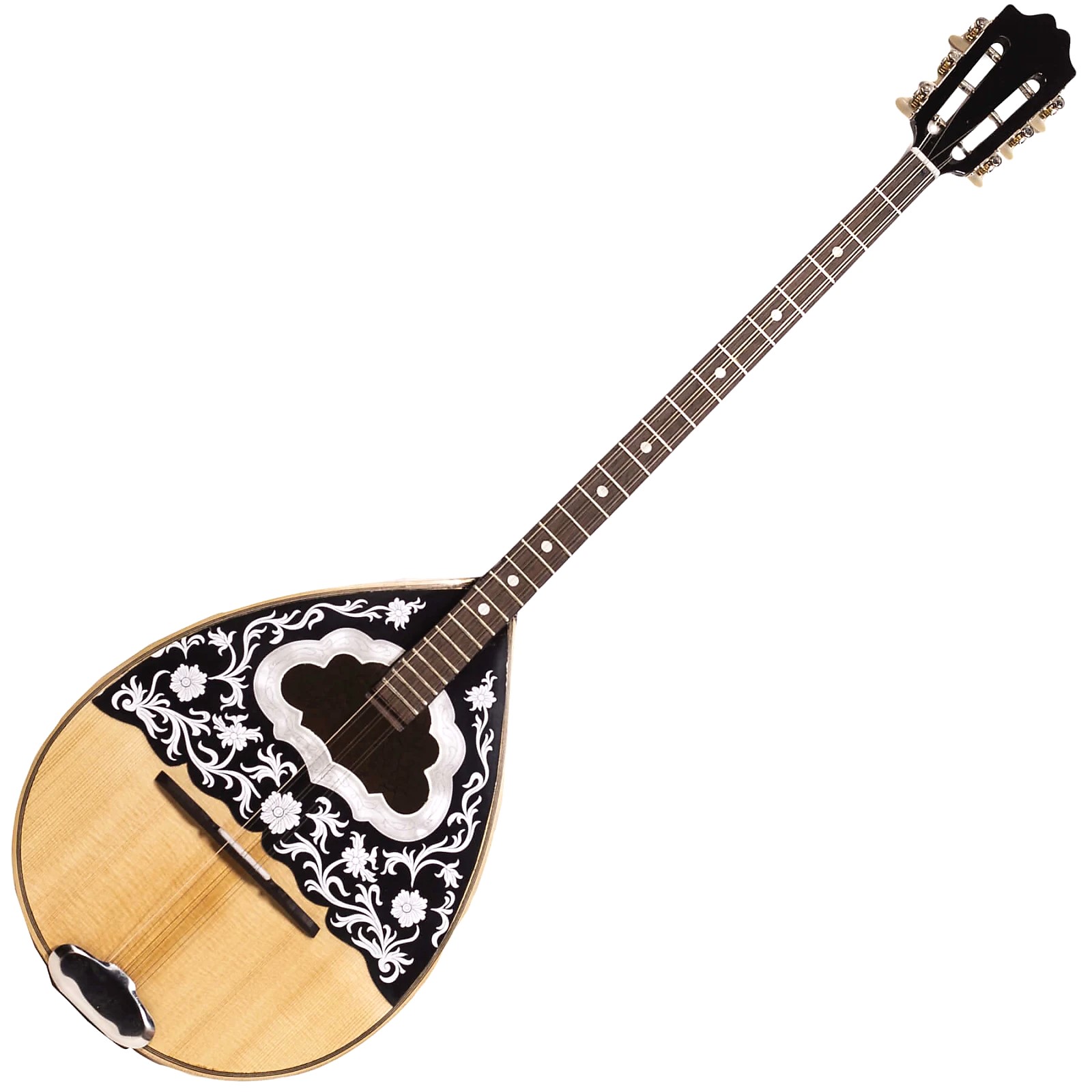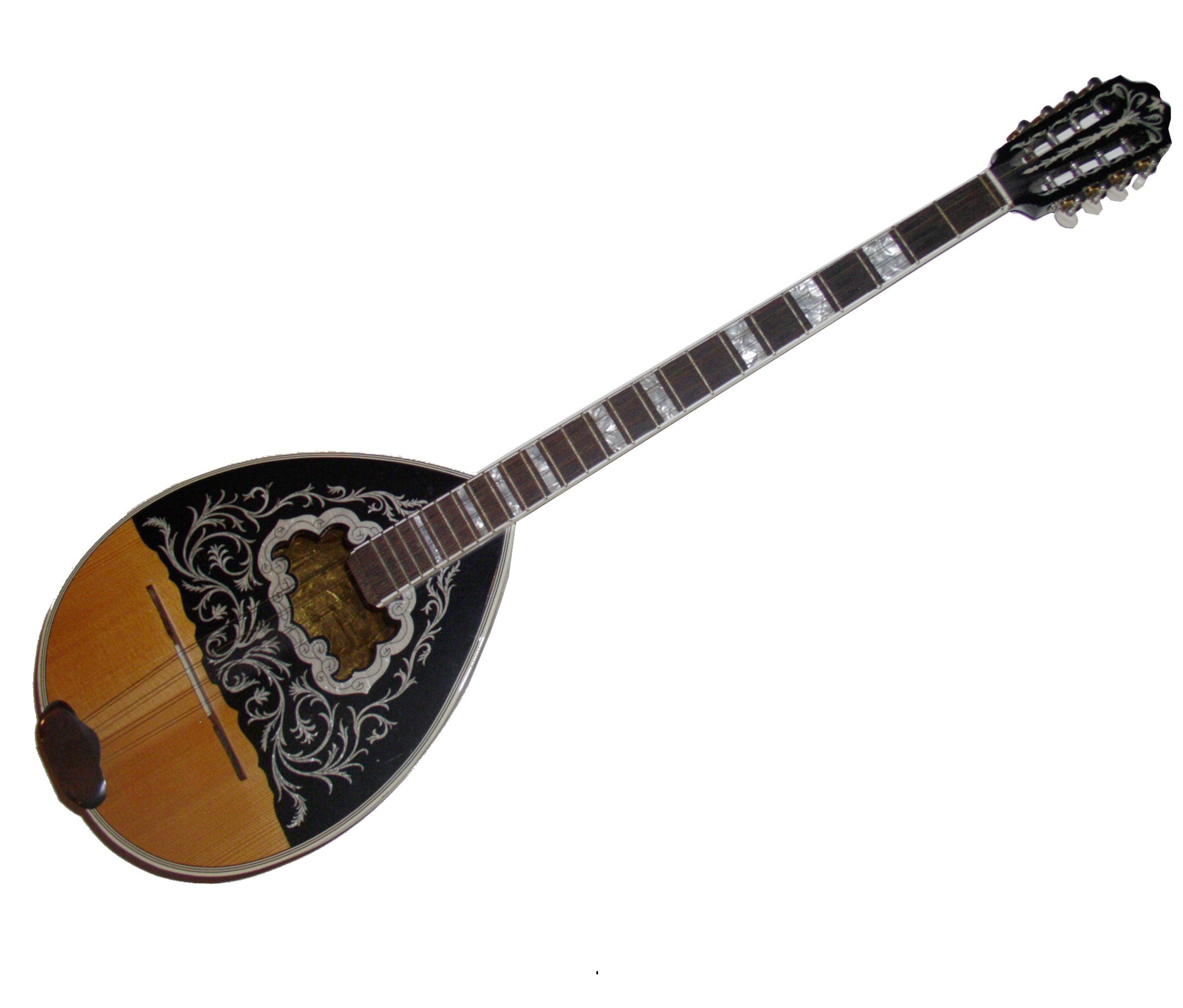Bouzouki
Plucked Instruments
Asia
Between 1001 and 1900 AD
Video
The bouzouki is a traditional Greek stringed instrument with a long neck and a pear-shaped body. It belongs to the lute family and is characterized by its metallic, bright sound. The instrument is widely associated with Greek folk and popular music, especially rebetiko and laïko genres. The bouzouki typically has a fretted fingerboard and is played using a plectrum. Its sound is produced by plucking the metal strings, which resonate through its hollow wooden body. The bouzouki’s design and playing style have evolved over the centuries, and today, it is an integral part of Greek musical culture.
The bouzouki is a stringed musical instrument and falls under the category of plucked string instruments. It is a member of the lute family, similar to the mandolin, but with distinct characteristics that set it apart. It is classified as a chordophone because its sound is generated by vibrating strings stretched over a resonating body. The instrument can be acoustic or electric, with the latter being used in contemporary music settings. Depending on the number of strings, the bouzouki can be categorized into different types, including the trichordo (three-course) and tetrachordo (four-course) variants.
Origins and History
The history of the bouzouki dates back to ancient times, with origins tracing to the broader family of lute instruments found in the Middle East, Persia, and Asia Minor.
Ancient Roots and Byzantine Influences
Although the modern bouzouki as we know it has its origins in the 20th century, its lineage can be traced back to ancient and Byzantine musical traditions. The bouzouki is believed to have evolved from the Pandura, an ancient Greek instrument with a long neck and three strings. The Pandura was used in various forms throughout the Byzantine and medieval periods, influencing later lute-like instruments in the Balkans and the Middle East.
The Bouzouki’s Arrival in Greece
The modern bouzouki, as it exists today, has direct ties to Asia Minor and Anatolian musical traditions. In the early 20th century, following the Greco-Turkish War (1919–1922) and the population exchange between Greece and Turkey, many Greek refugees from Asia Minor settled in Greece, bringing their musical culture and instruments with them. Among these instruments was the saz, a long-necked lute that greatly influenced the bouzouki’s design and playing style.
Rebetiko and the Bouzouki’s Rise to Fame
During the 1920s and 1930s, the bouzouki became closely associated with rebetiko music, often referred to as the “Greek blues.” Rebetiko was the music of the marginalized urban poor, dealing with themes of love, loss, hardship, and exile. In this underground scene, musicians developed a distinctive style of bouzouki playing, incorporating fast tremolo techniques, slides, and intricate melodies.
Construction and Design
The bouzouki is traditionally made from high-quality woods such as maple, rosewood, ebony, or spruce. The body is usually made from several strips of wood glued together to form a bowl-like shape, which enhances resonance. The top, or soundboard, is made of spruce or cedar, materials that contribute to the instrument’s bright and sharp sound. The neck is long and slender, with a fretted fingerboard that facilitates intricate playing techniques. The number of strings varies, with older trichordo models having six strings arranged in three double courses, while modern tetrachordo bouzoukis have eight strings arranged in four double courses. The strings are usually made of steel, and tuning mechanisms are similar to those of a guitar, allowing for precise pitch adjustments.
Types of Bouzouki
There are two primary types of Greek bouzouki:
Trichordo Bouzouki – This is the traditional three-course bouzouki with six strings arranged in three double courses. It is typically tuned to D-A-D and is associated with older styles of Greek folk and rebetiko music.
Tetrachordo Bouzouki – This modern four-course bouzouki has eight strings arranged in four double courses. It is tuned to C-F-A-D, similar to the top four strings of a guitar. The tetrachordo version offers greater versatility and is widely used in contemporary Greek music.
Playing Techniques and Sound Modifications
The bouzouki is played with a plectrum, producing sharp and percussive sounds. Players use techniques such as tremolo, vibrato, slides, hammer-ons, and pull-offs to create expressive melodies. The instrument allows for a variety of ornamentations, including rapid picking patterns and complex rhythmic accompaniments. In addition to traditional playing techniques, modern players often use electronic effects, amplification, and pedals to modify the sound, especially in fusion and rock settings. The electric bouzouki provides additional tonal possibilities, making it suitable for experimentation and cross-genre adaptations.
Applications in Music
The bouzouki is predominantly used in Greek music, playing a vital role in genres like rebetiko, laïko, and folk music. It is often featured in tavernas, concerts, and festivals, accompanying singers and other instruments such as the guitar and baglamas. Beyond Greek music, the bouzouki has found its way into Celtic, Middle Eastern, and even Western music styles. Artists in countries like Ireland and the United States have adapted the instrument for folk and rock music, further expanding its influence. The instrument is also commonly used in film scores to evoke a Mediterranean or Eastern European atmosphere.
Choosing an Electric Bouzouki
When selecting an electric bouzouki, players should consider factors such as body construction, pickups, and sound quality. Solid or semi-hollow bodies offer different tonal characteristics, with semi-hollow options providing a more acoustic-like resonance. Pickups, whether piezo or magnetic, impact the amplification and overall sound. Some electric bouzoukis come with built-in equalizers and tone controls, allowing for greater sound customization. It is also essential to choose a well-crafted instrument with a comfortable neck and fretboard for ease of playability.
Cultural Significance
The bouzouki is deeply embedded in Greek culture and heritage. It symbolizes Greek identity and the resilience of its people, particularly through its association with rebetiko music, which was historically linked to marginalized communities. Today, the instrument is celebrated in Greek music festivals, used in traditional dances, and remains a staple of Greek entertainment. It also serves as a cultural bridge, connecting Greece’s musical past with modern global influences. The bouzouki’s sound is instantly recognizable and evokes feelings of nostalgia, joy, and national pride among Greeks worldwide.
Maintenance and Care
To ensure longevity and optimal performance, proper maintenance of the bouzouki is necessary. Regular cleaning of the strings and fretboard prevents dirt buildup and prolongs string life. It is essential to store the instrument in a controlled environment to prevent damage from humidity or extreme temperature changes. Periodic tuning adjustments and fretboard conditioning help maintain playability. If the bouzouki has an electric component, keeping the electronics in good condition by checking cables, batteries, and pickups is crucial for consistent sound quality.
Advantages and Disadvantages
The bouzouki has several advantages, including its unique and expressive sound, versatility in various musical genres, and cultural significance. It allows musicians to explore a range of melodic and rhythmic possibilities. However, there are some disadvantages, such as the difficulty of mastering its complex techniques, the fragility of its construction, and the cost of high-quality instruments. Additionally, compared to more mainstream instruments like the guitar, the bouzouki has a more limited repertoire outside of Greek and folk music traditions.
Overall, the bouzouki is a fascinating and historically rich instrument that continues to evolve and captivate musicians and audiences worldwide. Its contribution to Greek music and beyond ensures its place as a cherished musical tradition for generations to come.
FAQ
How is a Bouzouki constructed?
The Bouzouki features a long-necked, pear-shaped body with a wooden soundboard. It has metal strings arranged in courses and a floating bridge. The instrument’s body is often inlaid with decorative patterns, giving it a distinct visual appeal.
What materials are commonly used in a Bouzouki?
The soundboard is typically made of spruce for resonance, while the back and sides are constructed from maple, rosewood, or mahogany. The neck is usually made from mahogany, and the fretboard is crafted from ebony or rosewood. The strings are steel for a bright, projecting tone.
How is a Bouzouki played?
The Bouzouki is played with a plectrum, producing a bright and percussive sound. Musicians use techniques like tremolo, slides, and fast picking to create complex melodies. It is a key instrument in Greek folk and traditional music.
 Links
Links
References
Other Instrument
Categories




















